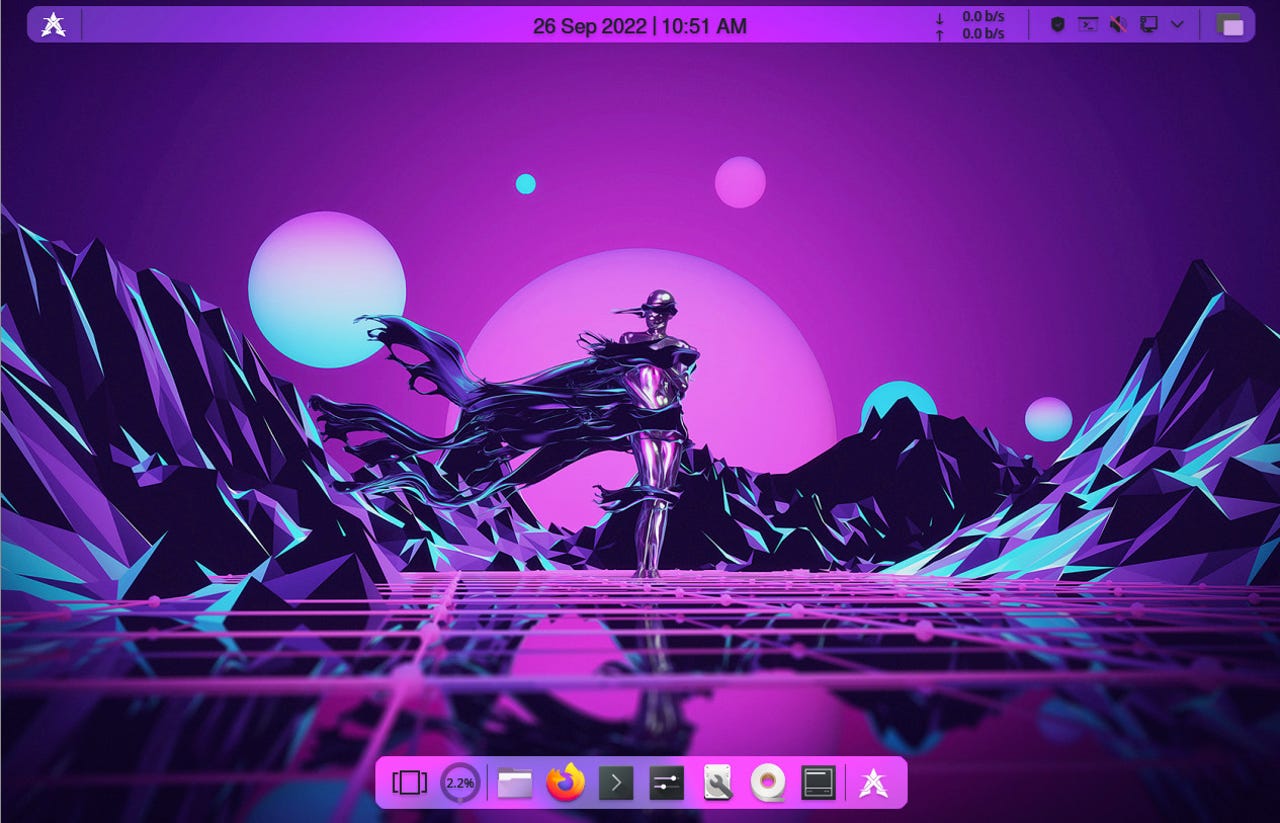XeroLinux could be the most beautiful Linux desktop on the market


Over the decades, I've witnessed countless Linux desktop distributions, each of which attempts to set itself apart from the competition. Some of them, such as ZorinOS and Deepin Linux, have done a fairly remarkable job of doing just that. Since I started covering Linux back in '99, I've proclaimed distributions such as Elementary OS, ZorinOS, Deepin Linux, and Garuda Linux to be offering the most beautiful desktop on the market.
However, I've recently happened upon a new release of XeroLinux that makes a very strong case to claim that coveted spot.
XeroLinux is an Arch-based distribution that uses the KDE Plasma desktop to create an environment that is not only gorgeous, but also just as user-friendly as you've come to expect from the modern Linux desktop.
And the latest release of XeroLinux makes its case with a default color scheme that would have made Prince break into an unearthly guitar solo while dancing in the rain.
That's right, it's all purple and it's glorious.
What makes XeroLinux so special?
To begin with, the developers of XeroLinux have made the wise choice of following Hick's Law. For those that don't know, Hick's Law (aka Hick-Hyman Law) is named after William Edmund Hick and Ray Hyman, who studied the relationship between the number of stimuli present and an individual's reaction time to any given stimulus.
Also: I tested out an AI art generator and here's what I learned
From that study, they determined the more stimuli available lengthens the time it takes a user to make a decision. When a user suffers a deluge of options, they must take extra time to first interpret what they've been presented, and then act upon that.
There's even a formula for Hick's Law, which is RT = a + b log2 (n), where:
- RT is reaction time.
- n is the number of stimuli present.
- a/b are arbitrarily measurable constants.
Did the developers succeed at their task? I believe they have. When you look at the XeroLinux desktop, you'll find it contains not too few items and not too many. Instead, XeroLinux strikes that perfect combination that would prevent new users from getting overwhelmed, and seasoned users from getting underwhelmed.
I'm going to skip all of the magic that happens under the hood, because most users really don't care about those bits, so long as everything runs well. Trust me when I say, XeroLinux runs as smooth and silky as any Arch-based distribution.
The Konsole app showing the XeroLinux global menu.
What truly makes XeroLinux so special is how the developer doesn't stick with a default KDE Plasma layout (because that would be boring). Instead, the developer opts to give the desktop a decidedly MacOS feel with a dock and a top bar. Even without a single customization, everything looks and behaves to perfection.
The developers have taken great care to include everything on the desktop to make it easy to interact with the OS, but one of my favorite bits is the global menu that appears in the top bar for the application you're currently working on. Instead of an app taking extra space by housing its menu bar within the app window, XeroLinux kicks it off to the top bar, so you have access to the menu no matter where the window is. I've always been a fan of global menus, as they free up space in the app window and help standardize your workflow.
Other things that help set XeroLinux apart include:
- Both Pamac and Synaptic are available for software installation.
- A simple-to-navigate desktop menu.
- Flatseal flatpak GUI for easy installation.
- A drop-down terminal window (Yakuake).
- Plenty of animations.
- Grub customizer.
- Quick-access dark and light theme switching.
- Tons of configuration options.
- XeroLinux Configuration tool (for easy system updates and help setting up things like Samba and Nvidia graphics).
Not everything's perfect
I did run into a couple of small issues with XeroLinux, all easily solved. The first involved the Flatseal app. When I first opened the app, I was unable to search for installable Flatpak applications or do anything with the app. However, once I installed a Flatpak app from the command line ("flatpak install spotify"), Flatseal behaved as expected.
The other troubling issue was the Pamac GUI software installer. One of the first things I did was attempt to install LibreOffice with the Pamac GUI. Things did not go so well, and Pamac had some problems synchronizing package databases. Eventually, after the system detected that updates were available, the databases fell into sync, and I was then able to install LibreOffice (and plenty of other software). The process was a bit slower than I'd have liked, but it wasn't terribly challenging to resolve.
Also: What's new in LibreOffice and how do you install it in MacOS?
The thing about XeroLinux is that it's such a beautifully designed desktop, you're willing to forgive any slight hiccups that occur. And given most of the hiccups wound up resolving themselves, it's hard to find even the slightest fault in this outstanding Linux desktop operating system. I highly recommend downloading an ISO of XeroLinux and giving it a try. I'm confident you'll like what you see.